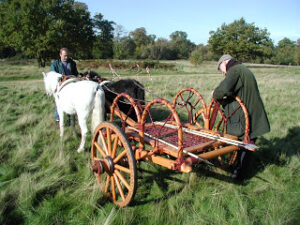If you are looking for something to read, L. Sprague de Camp’s “The Ancient Engineers” is worth considering. One of the things I learnt from this book was that four-wheeled transport was relatively rare for a considerable period of man’s early history. This was because it was some time before the king pin was invented. The king pin is the pivot point for the front wheels of a cart. Before this invention four-wheeled vehicles were difficult and slow to turn. This is the reason why many ancient peoples favoured two-wheeled transport such as chariots.
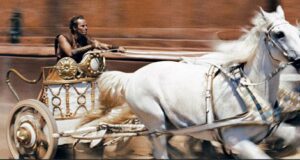
The book has some interesting information on Roman chariots. Apparently a young man’s chariot was boarded from the rear and driven while standing. This is the sort of chariot familiar to us from movies such as Ben Hur. Older men, however, favoured chariots they could board from the front and drive seated. This seems a metaphor for “youth and energy” versus “age and wisdom”. The young man would travel between towns standing and probably tired and aching when he reached his destination. The older man rode seated and probably in comfort with a blanket across his legs. If we look at horse-drawn transport in later centuries it becomes apparent that the older man’s chariot remained in use under a number of other names. Look at the horse-drawn gig, cabriolet and racing buggy and we see chariots for seated drivers.
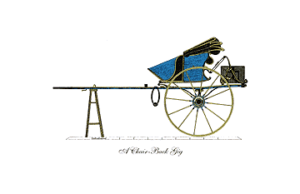
Chariots are something that interests me for a variety of reasons. Chariots were used by a variety of ancient peoples but if we want to find the most developed designs we do not have to look far from home. Below are some illustrations of Celtic chariots.
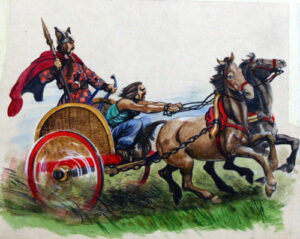
The open back would allow the chariot to be rapidly boarded or dismounted on the battlefield. As you can see, these can be boarded from behind but are also open at the front so the driver can be seated if he desires. Ancient accounts describe how Celtic heroes would run along the pole between the horses to slash at enemies before the chariot. This athletic accomplishment gives us another hint about the capabilities of chariots on the battlefield. This feat suggests that the chariot had slowed or stopped before the infantry. If the chariot was moving at speed there would be little point in slashing at foes before it, they would simply be run down. Many modern historians and re-enactors have discovered that they cannot get horses to charge through an unbroken line of infantry. Horses may not be the brightest of creatures but they will not run into an apparently solid wall! Accounts of chariots smashing through shield walls need to be taken with reservation. The integrity of the formation would have had to have been disrupted first.

One illustration shows a detachable canopy could be fitted to a chariot to keep off the rain or provide shade. Possibly this could be used as a shelter when the chariot driver was camped. A plank for the driver to sit on is also shown. Other seating arrangements might have included a storage trunk. A hammock style camp stool would also be a possibility to provide some cushioning against the bumps in the road
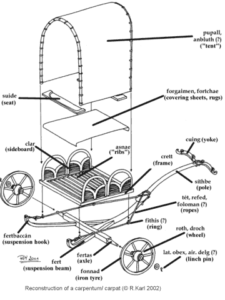
The most interesting feature, in my opinion, and that which marks the Celtic chariots as most advanced technically is that they incorporated a suspension system. Many illustrations show two arched structures on each side of the chariot. Sometimes these are concealed by a side wall that provided protection on the battlefield. Illustrations show a Y-shaped structure within each arch and this has been assumed to be wooden. Excavations of Celtic chariots reveal these Y-shaped structures were not wood. The photos here and on this site show that these were Y-shaped straps from which the floor of the chariot was suspended. The floor here is made from a lattice of straps but it is possible that in actual use this was covered by a rug, fur or wicker. Experiments with reproductions of Celtic chariots show this floating/suspended floor structure gives the chariot riders a much smoother ride, even when moving at speed.

